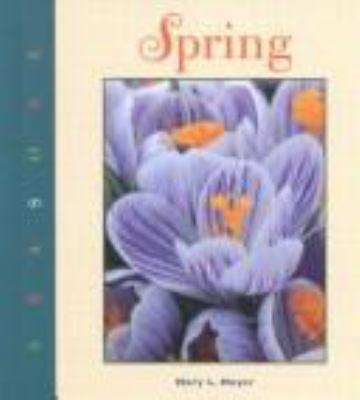
Spring
Describes the climate and activities of spring and the ways in which some animals and plants respond to longer, warmer days.
Available Copies by Location
| Location | |
|---|---|
| Community Centre | Available |
Browse Related Items
| Subject |
| Spring > Juvenile literature. Spring. |
- ISBN: 1583401431
- Physical Description 23 pages, 1 unnumbered page : color illustrations --.
- Edition 1st ed. --
- Publisher North Mankato, MN : Smart Apple Media, [2003]
- Copyright ©2003
Content descriptions
| Bibliography, etc. Note: | Includes bibliographical references (page 24), Internet addresses and index. |
| Immediate Source of Acquisition Note: | LSC 23.20 |
Series
Additional Information

Spring
Click an element below to view details:
Summary
Spring
The visual image is the common denominator of cinema and painting, and indeed many filmmakers have used the imagery of paintings to shape or enrich the meaning of their films. In this discerning new approach to cinema studies, Angela Dalle Vacche discusses how the use of pictorial sources in film enables eight filmmakers to comment on the interplay between the arts, on the dialectic of word and image, on the relationship between artistic creativity and sexual difference, and on the tension between tradition and modernity. Specifically, Dalle Vacche explores Jean-Luc Godard' iconophobia ( Pierrot Le Fou ) and Andrei Tarkovsky' iconophilia ( Andrei Rubleov ), Kenji Mizoguchi' split allegiances between East and West ( Five Women around Utamaro ), Michelangelo Antonioni' melodramatic sensibility ( Red Desert ), Eric Rohmer' project to convey interiority through images ( The Marquise of O ), F. W. Murnau' debt to Romantic landscape painting ( Nosferatu ), Vincente Minnelli' affinities with American Abstract Expressionism ( An American in Paris ), and Alain Cavalier' use of still life and the close-up to explore the realms of mysticism and femininity ( ThÃrÃse ). While addressing issues of influence and intentionality, Dalle Vacche concludes that intertextuality is central to an appreciation of the dialogical nature of the filmic medium, which, in appropriating or rejecting art history, defines itself in relation to national traditions and broadly shared visual cultures.


